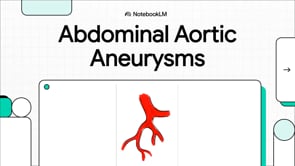22歳で既往歴のない女性が、重度の頭痛、発熱、呼吸不全、および神経症状を伴う急速進行性の疾患を発症した。医学的評価により、脳出血、多発性脳梗塞、心臓弁障害、肺病変など生命を脅かす合併症が確認された。詳細な検査の結果、ストレプトコッカス・ミティス(Streptococcus mitis)による侵襲性細菌性心内膜炎と診断された。この感染症は全身に播種し、多臓器障害を引き起こしていた。
若年女性の医学的ミステリー:頭痛から多臓器不全へ
目次
- はじめに:突発的な症状の発現
- 症例提示:患者の経緯
- 初期評価と入院経過
- 専門医療機関への転院
- 詳細な画像所見
- 検査結果の分析
- 鑑別診断:考えられる病態は?
- 確定診断と治療
- 患者への臨床的示唆
- 本症例から得られた重要な教訓
- 情報源
はじめに:突発的な症状の発現
本症例は、既往歴のない22歳女性が、軽微な症状から始まり急速に生命を脅かす多臓器不全へ進行した事例である。細菌感染症が急速に全身に広がり、脳、心臓、肺、脾臓など複数の臓器に障害を引き起こす過程を示している。
患者の経過は、懸念すべき症状を早期に認識し、適切な医療を受けることの重要性を浮き彫りにしている。複数の臓器系に同時に影響する症状を呈したため、医師は根本原因を特定する前に様々な鑑別診断を検討する必要があった。
症例提示:患者の経緯
患者は22歳女性で医療従事者。入院8日前まで健康状態は良好であった。症状は悪心と筋肉痛で始まり、その後2日間で悪寒、嘔吐、頸部痛、音恐怖症を伴う頭痛へと進行した。
初回の救急科受診時、口腔内乾燥を認めたが髄膜炎の所見はなかった。白血球数は12,300/μL(基準範囲:4,800-10,800)で上昇、血小板数は95,000/μL(基準範囲:150,000-450,000)で低下。点滴静脈内輸液と鎮痛薬投与を受け、ウイルス性症候群の疑いで帰宅となった。
初期評価と入院経過
その後1週間で症状は著しく悪化。光恐怖症を伴う頭痛の増悪、全身倦怠感、食欲不振、乾性咳嗽、軽度労作時呼吸困難が出現。専門病院転院2日前には、母親が混乱発作と無意味な発語、過度の眠気を認めた。
救急科再受診時、バイタルサインは発熱(38.0°C)、頻脈(106回/分)、低血圧(100/55 mmHg)、頻呼吸(22回/分)。酸素飽和度は酸素投与下で97%。光恐怖症、軽度咽頭発赤、びまん性腹部圧痛を認めた。
初期の非造影頭部CTでは、くも膜下出血と頭頂葉・側頭葉のびまん性虚血性変化を認めた。胸部・腹部・骨盤部CTでは:
- びまん性間質性肺陰影
- 末梢肺野の多発性陰影と結節
- 脾臓末梢の2つの低吸収域
- 小規模な後腹膜リンパ節腫大
専門医療機関への転院
患者は集中治療室に入室し、バンコマイシン、セフトリアキソン、メトロニダゾール、ドキシサイクリンを含む多剤抗菌薬療法を開始。治療にもかかわらず呼吸状態が悪化し、酸素投与量の増加が必要となった。その後、専門的治療のためにマサチューセッツ総合病院へ転院。
到着時、患者は混乱状態で頻呼吸。既往歴としてシタロプラムによるうつ病治療歴。社会的なワイン摂取、電子タバコ使用、時折のマリファナ使用を報告したが、喫煙歴はなし。1年以上前にカリブ海へ旅行したが、最近の森林地帯、動物、昆虫への曝露はなかった。
診察では、呼吸困難により呼吸補助筋を使用。促し後のみ見当識が保たれ、頸部硬直(髄膜刺激症状)と肩部硬直を認めた。異常呼吸音(ラ音とラ音)と、心尖部および左腋窩部で最強、胸骨に放散する3/6度の全収縮期雑音を聴取。脾先端を触知し、上胸部に小範囲の点状出血を認めた。
詳細な画像所見
高度画像診断により、全身にわたる複数の重篤な異常が明らかとなった:
頭部CTおよびMRI: 急性くも膜下出血と両大脳半球の多発性急性皮質梗塞を示唆。皮質溝に両側性散在性曲線状高吸収域が出血を示し、左頭頂葉上部小葉と右側頭葉に局所的な低吸収域が梗塞を示した。
胸部CT: 軽度間質性浮腫、両側胸水、全肺葉に及ぶ多巣性気管支血管周囲結節状陰影と浸潤影を認めた。一部病変は末梢分布で空洞形成はなし。
腹部CT: 脾梗塞を示唆する複数の脾低吸収域を認め、軽度腹水と軽度門脈周囲浮腫を伴っていた。
血小板輸血後施行した腰椎穿刺では、初圧38 cmH₂O(上昇)、脳脊髄液所見として: - グルコース:41 mg/dL(低値、基準値50-75) - 蛋白:31 mg/dL(正常) - 赤血球:2400/μL(上昇、基準値0-5) - 白血球:49/μL(上昇、基準値0-5)、好中球76%
検査結果の分析
患者の検査所見は、経過中に複数の異常を示した:
血算: 進行性貧血(ヘモグロビン12.5から8.9 g/dLへ低下)、持続的白血球増多(最高20,210/μL、好中球92%)、重度血小板減少(輸血前28,000/μL)。末梢血塗沫標本では中毒性顆粒を認めた。
生化学検査: 低ナトリウム血症(133-136 mmol/L)、低カリウム血症(3.4 mmol/L)、尿素窒素上昇(25 mg/dL)、クレアチニン正常、低カルシウム血症(7.7-8.0 mg/dL)、低総蛋白・低アルブミン血症、アルカリホスファターゼ上昇(169 U/L)、ビリルビン上昇(1.8 mg/dL)。
心臓マーカー: N-terminal pro-B-type natriuretic peptide(NT-proBNP)は9,130 pg/mL(基準値<125)と著明上昇し、心負荷を示唆。
炎症マーカー: D-ダイマー1,406 ng/mL(基準値<500)、フィブリノゲン502 mg/dL(基準値150-400)、フェリチン258 μg/L(基準値10-200)と上昇。
鑑別診断:考えられる病態は?
医師はこの複雑な病態に対して複数の可能性を検討した:
感染性疾患: 発熱、心雑音、神経症状、多臓器障害の組み合わせは強く感染過程を示唆。可能性として: - 細菌性心内膜炎(心弁膜感染症) - ダニ媒介性疾患(ロッキー山紅斑熱、エールリヒア症、アナプラズマ症) - ウイルス感染症(初期検査は陰性) - 特殊細菌感染症(レプトスピラ症、ブルセラ症)
自己免疫疾患: 自己免疫疾患の家族歴(母親:全身性エリテマトーデス、祖母:橋本病)から、リブマン・サックス心内膜炎や抗リン脂質抗体症候群などの自己免疫性原因を考慮したが、抗核抗体の初期検査は陰性。
その他の考慮事項: 血栓性血小板減少性紫斑病や溶血性尿毒症症候群も考慮されたが、特徴的な検査所見の欠如から可能性は低いと判断。
心雑音、神経症状、呼吸不全、脾異常、血液培養結果の存在から、感染性心内膜炎に敗血症性塞栓症(血流を介した感染の全身播種による多臓器閉塞)が最も強く示唆された。
確定診断と治療
確定診断は、血液培養でStreptococcus mitis(ストレプトコッカス・ミティス)が検出されたことにより確定。この細菌は口腔内常在菌であるが、血流に入ると重篤な感染症を引き起こす可能性がある。
経食道心エコー検査により原因が明らかに:僧帽弁に多発性疣贅(感染性物質の塊)を認め、後尖に複数の穿孔があり重度の僧帽弁逆流を引き起こしていた。これが心雑音と細菌の全身播種の機序を説明。
治療には以下が含まれた: - 広域スペクトル抗菌薬の継続 - 弁修復または弁置換術のための外科的コンサルテーション - 人工呼吸器を含む支持療法 - 痙攣発作と神経障害を含む合併症の管理
Streptococcus mitis感染症は特に侵襲性が高く、この細菌が産生する毒素が全身の広範な炎症と組織障害を引き起こすためである。
患者への臨床的示唆
本症例は患者にとって重要な教訓を提供する:
重篤な症状の認識: 軽微な流感様症状から始まった病態が、急速に生命を脅かす状態へ進行。以下の症状で速やかに医療機関を受診すべき:
- 光または音過敏を伴う重度頭痛
- 持続または悪化する発熱
- 混乱または意識状態の変化
- 軽度労作時呼吸困難
- 原因不明の挫傷または皮膚点状出血
心内膜炎リスクの理解: 心内膜炎は誰でも発症し得るが、以下に該当する患者でより一般的: - 既往の心弁膜障害または人工弁 - 特定の先天性心疾患 - 静脈内薬物使用歴 - 細菌を血流に導入する可能性のある最近の歯科処置または他の医療処置
完全な病歴の重要性: 本患者の医療従事者としての職業は病原体への曝露機会があった可能性があるが、感染源は特定されなかった。
本症例から得られた重要な教訓
この複雑な症例は、いくつかの重要な医学的原則を説明している:
多臓器系評価: 患者が複数の臓器系に同時に影響する症状を呈する場合、医師は各症状を個別に治療するのではなく、全ての所見を説明できる診断を考慮しなければならない。
急速な進行: 一部の細菌感染症は、軽度の症状から生命を脅かす多臓器不全へと驚くべき速さで進行する可能性がある。早期認識と治療が不可欠。
診断上の課題: 本症例では、感染症科、循環器科、神経内科、集中治療医を含む複数専門医の連携により、正確な診断に至った。
治療の複雑さ: このような重篤な感染症の治療には、標的抗菌薬療法と、広範な炎症や臓器障害に伴う多様な合併症に対する支持療法の両方が必要。
患者は最終的に、集中治療を要する長期入院、多剤抗菌薬療法を必要とし、神経学的および心臓合併症に対する長期経過観察が必要となる見込み。
出典情報
原題: Case 38-2024: A 22-Year-Old Woman with Headache, Fever, and Respiratory Failure
著者: Eleftherios Mylonakis, M.D., Ph.D., Eric W. Zhang, M.D., Philippe B. Bertrand, M.D., Ph.D., M. Edip Gurol, M.D., Virginia A. Triant, M.D., M.P.H., and Kristine M. Chaudet, M.D.
掲載誌: The New England Journal of Medicine, December 5, 2024; 391:2148-57
DOI: 10.1056/NEJMcpc2100279
この患者向け記事は、マサチューセッツ総合病院症例記録の査読付き研究に基づいています。




